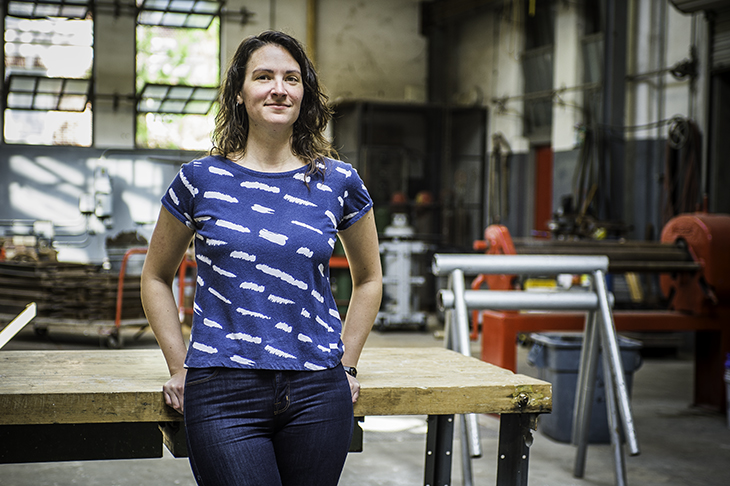Taking risks in sculpture

Emily Hermant, who joined the faculty this semester as an assistant professor of sculpture, seeks to inspire students in the Sculpture Foundry in the Woldenberg Art Center on the Tulane University uptown campus. New digital art tools were a gift from New Orleans resident Louis Jung, in honor of his mother, Harriett Tolar Jung, a 1940 Newcomb College graduate who majored in painting. (Photo by Ryan Rivet)
Artist Emily Hermant"s practice often plays with aspects of permeating technology in contemporary life. Her work reinvents the ancient art of sculpture using modern materials.
Hermant, whose practice spans sculpture, installation, fibers, digital media and drawing, joined Tulane University in August as an assistant professor of sculpture in the Newcomb Art Department, housed within the School of Liberal Arts.
“It"s exciting to be at Tulane to develop a sculpture program that incorporates nontraditional approaches,” she says. “It"s an opportunity to expand the repertoire to include practices that have historically existed on the margins of the field.”
Receiving critical acclaim, Hermant"s beautiful, thought-provoking work has been exhibited internationally. The Washington Post described Hermant"s Spatial Drawings, in which long planks of wood have been curved into graceful and unusual poses, as “wavelike ribbons of lumber ⦠as lithe and leanly muscled as ballet dancers ⦠[her] sculptures activate the space they"re in, along with our perception of it.”
Hermant, who hails from Canada and received her MFA from the School of the Art Institute of Chicago, says that she “will encourage students to experiment and take risks, to work in new ways with traditional materials, to develop ways of using new materials, and to experiment with emerging technologies.”
Hermant as well as other Tulane artists can experiment with new sculptural work and test their boundaries using the Newcomb Art Department"s CNC router, a computer controlled cutting machine, and 3-D printers. With a CNC router, an artist designs artwork in a computer program, and the computer communicates to the machine how to carve the artwork. A 3-D printer works in a similar fashion, but by methodically adding material.
These digital art tools were a gift from New Orleans resident Louis Jung, in honor of his mother, Harriett Tolar Jung, a 1940 Newcomb College graduate who majored in painting.
Mary Sparacello is a communications specialist in the Office of Development Communications.
